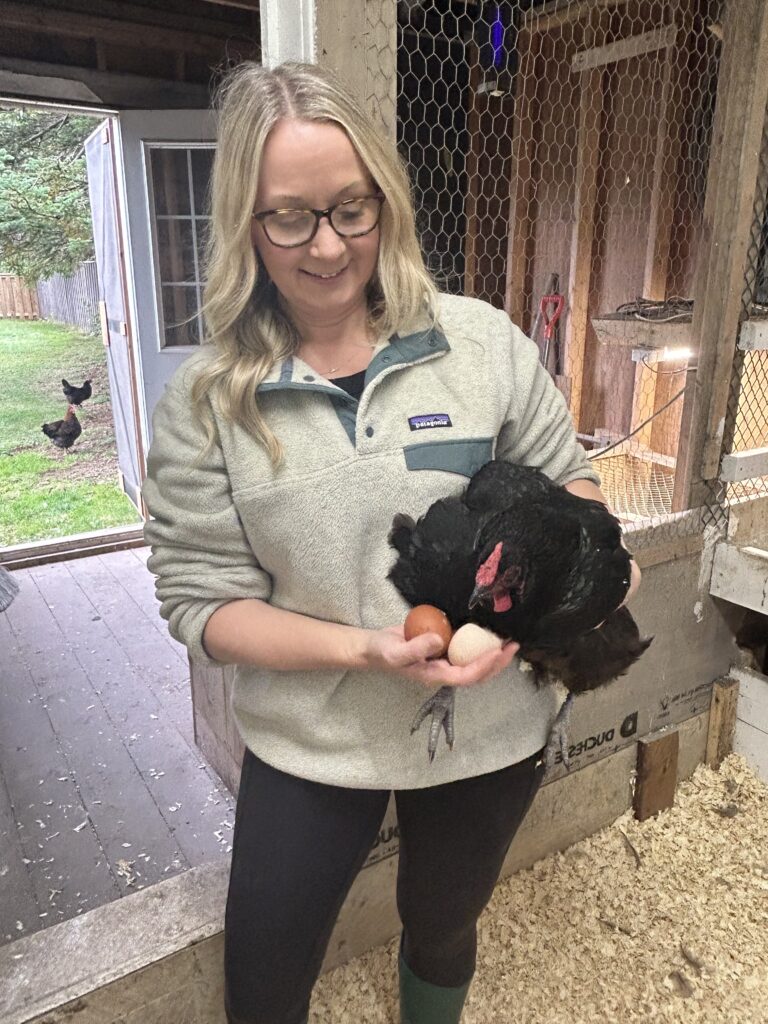Homesteading can bring down the cost of living and increase well-being.
Emma Peddle
Kicker
Homesteading and backyard farming are more common now for three main reason – financial, nutritional or just knowing where the produce is coming from.
Leslie Healey started her backyard farming journey just before COVID-19 with just a few chickens. It started with her saying she’d get four, then six (in case she lost one or two), and then eight.
Now she has anywhere from 20-30 chickens at a time, sometimes up to 50 if they have the broiler chickens.
“Chicken math is a real thing,” said Healey.
Starting with chickens, then a little greenhouse and slowly putting in a few beds, what once was a small hobby is now a homesteading lifestyle.

Growing a variety of produce like potatoes, beans, lettuce, rhubarb and various herbs, the list goes on and on. Healey can have a full nutritional meal straight from her backyard.
While the layout and size of the garden may be on the smaller side, her harvest is plentiful.
“My freezer out there now is full,” said Healey, “I think I harvested close to 600 tomatoes. I have like Ziplock bags upon Ziplock bags.”
To store all her harvest and produce, Healey dehydrates, freeze dries, pressure cans, ferments, freezes and water-bath cans all of her own produce to preserve it. Currently storing it all in a closet, her goal is to have her garage finished and move it all there.
“When Paddy (her husband) finishes that garage, the garage on the house is going to be a seed-starting room, pantry and a freeze dryer, to keep everything in the one area,” said Healey.
Growing her own vegetables isn’t the only kind of homesteading Healey does. She also raises her own chickens, to be used for eggs and meat.
“We bring them in from the co-op, usually about a day old, raise them for 8-10 weeks and then we process them here in the yard,” said Healey.
While the broiler chickens are meat chickens, Healey has not limited herself to one breed of chicken. She also has her laying-hen breeds – Olive Egger, Azure, Barnyard Mix, Norians and more.
These chickens produce brown, blue, and green eggs. Healey never wanted white eggs, because those are just supermarket eggs.
Not knowing how it would work with the chickens, as she was terrified of birds, she started with a few and then it spiraled from there.
“Once you get them, they’re really sweet, I got to say. I could sit out there for hours and watch them,” said Healey. “Crazy chicken lady.”
While Healey doesn’t sell to the public, Ashley and Aaron Janes, owners of Home-Grown Farms, have been selling their produce since 2021.
For the Janes, their homesteading journey started when Aaron was looking for a change of pace.
“We had an interest in growing and farming, and we had access to land, equipment and all the stuff we needed,” said Ashley, about their Harbour Grace homestead. “So, it just made sense at the time to give it a try.”
Knowing that food security and access to fresh vegetables is complicated on the island, Ashley felt like there was room for something in their local area.
She believes a big part for most people is knowing where their food comes from.
Home Grown Farms mainly focuses on growing root vegetables like cabbage, beets, carrots, etc., and frequently experiments with other types of vegetables like broccoli or lettuce.
“I do think people also want to know where their food comes from. They are frustrated with what they see in the grocery stores,” said Ashley.





Be the first to comment